
James Bond movie No Time To Die arrives in Cineworld in September, and we're counting down the days by revisiting all the 007 movies in chronological order of release.
In honour of Daniel Craig's swan-song as 007, we're taking a nostalgic trip back through time. This week: From Russia With Love...
What is the story of From Russia With Love?
British MI6 agent James Bond/007 (Sean Connery) has succeeded in killing SPECTRE agent Doctor No. The criminal mastermind served as part of the organisation known as the Special Executive for Counter-Intelligence, Terrorism, Revenge and Extortion – and now its leader Blofeld (Anthony Dawson, voiced by Eric Pohlman) is seeking revenge.
SPECTRE agent Kronsteen (Vladek Sheybal) lures Bond into a trap by manipulating him into retrieving a Lektor cryptography machine from the Soviets. On Bond's retrieval of the machine, they aim to steal it and have him assassinated by deadly agent 'Red' Grant (Robert Shaw), trained by SPECTRE under the supervision of Rosa Klebb (Lotte Lenya). This will eliminate 007 while pitting east and west against one another.
Upon his arrival in Istanbul, Bond recruits analyst Tatiana Romanova (Daniela Bianchi), who believes her superior Klebb is still working for the Soviet counter-intelligence agency known as SMERSH. A tangled web of betrayal and violence ensues as Bond and Grant draw closer to a confrontation.
How did From Russia With Love get made?
Released in 1962, espionage thriller Dr No was nothing less than a cultural phenomenon, unleashing spy James Bond onto the screen for the first time. Created by author and former intelligence agent Ian Fleming, the character had already become established in literary circles, but his pop culture status rose exponentially with the release of the movie.
A large part of the film's success was the triumphant casting of Sean Connery in the lead role. The Scotsman was an unexpected choice for the part, and was best known as a former Mr Universe contender. However, he superbly assimilated the suave, masculine (possibly misogynistic) qualities of both Bond and his creator, and remains for many people the definitive actor to have taken on the role.
Produced by Albert R. 'Cubby' Broccoli and Harry Saltzman, whose partnership was to continue until 1974's The Man with the Golden Gun, Dr No was an enormous box office success, grossing more than $50 million against a meagre $1.1 million budget. Emboldened, Broccoli and Saltzman immediately began working with United Artists, EON and Danjaq (the latter two companies were formed by them) to create a follow-up movie.
Fleming's book From Russia With Love was one of President John F. Kennedy's favourites, as reported in Life magazine, so it was perhaps inevitable that it would form the basis of the second Bond movie. United Artists greenlit the film with a $2 million budget and Connery's presence was secured with a $100,000 bonus to go with his $54,000 salary.
The novel's gritty, grounded story of Cold War paranoia gathered extra traction with the release of the movie: in 1963, the world was in a post-Cuban Missile Crisis era, and tensions between Western powers and the Soviets was at an all-time high. For this reason, From Russia With Love the movie cut, at the time, an especially topical narrative, and even today its relative plausibility is a refreshing alternative to the sillier Bond offerings.
That said, the film-makers were keen to establish the movie as an escapist fantasy, and so Fleming's villainous organisation SMERSH (inspired by real-life Soviet powers) was changed to SPECTRE, to avoid political affiliations. The corrupt agency had been established in the earlier Dr No and would become a key presence in the early Connery Bond movies, before fading into the background with the advent of the Roger Moore era.
Dr No screenwriter Richard Maibaum penned the screenplay for From Russia With Love. The production also retained Johanna Harwood, who had reworked Maibaum's script for the earlier movie, and it's alleged by some that she made only cosmetic changes to Maibum's From Russia With Love screenplay (hence her screen credit).
However, Harwood would eventually leave the project, citing interference from director Terence Young who sought to deviate from her loyalty to Fleming's source. Maibaum would himself continually rewrite the script throughout production – the climactic action scenes involving speedboats and helicopters didn't feature in the novel, but were added for the purposes of audience excitement.
Berkely Mather, who had contributed to the Dr No screenplay, also added rewrites, causing Young and editor Peter Hunt (who would helm 1969's On Her Majesty's Secret Service) to work around spontaneous changes to the narrative. This led to the creation of a Bond tradition: the pre-title sequence, whereby the audience is teased prior to the opening credits.
In this instance, Young and Hunt moved 'Red' Grant's training sequence, where he's shown executing a dummy James Bond in disguise, to the very beginning of the movie, establishing the character's sense of menace and the physical threat he poses to the real 007.
Connery's increasingly confident presence grounds From Russia With Love: although he plays the role with a clear twinkle in his eye, he appears to be taking the story seriously, and invests us in Bond's battle against SPECTRE. This becomes most apparent in the landmark Orient Express train fight between himself and 'Red' Grant actor Robert Shaw, best known at that point for his appearances on television and in the Royal Shakespeare Company.
Overseen by director Terence Young (who returned following his successful helming of Dr No), the fight remains one of the best in the Bond canon. Resisting the temptation to deploy John Barry's music, the sequence instead uses the ambient noises of the train itself to accentuate the animalistic battle between two highly-skilled agents. Shot over three weeks with the actors performing their own stunts, the scene helped secure the physicality of Connery's Bond portrayal in the minds of audiences.
Young's involvement is largely responsible for keeping the film plausible – as with Dr No, he places emphasis on character and atmosphere, juicing the paranoid, knotty screenplay with just enough humour to temper its sexist and violent tendencies. He works with cinematographer Ted Moore (later to win an Oscar for Robert Shaw drama A Man for All Seasons) to capture the exotic, shadowy atmosphere of Istanbul – key Turkish locations included the Basilica Cistern, Hagia Sophia and the Sirkeci railway station.
However, in order to qualify for British film funding, 70% of the movie had to be shot on location in the UK. Therefore, despite the climactic scenes in Venice and additional photography in Switzerland, many key set-pieces used Bond's spiritual home of Pinewood to stand in for far-flung locales.
This included the famous gypsy girl fight sequence, mean to be taking place in Topkapi but actually shot at Pinewood, choreographed over the course of six weeks with actors Martine Beswick (who also appeared in Thunderball) and Aliza Gur. Meanwhile, the climactic helicopter duel (inspired by the crop-duster attack in Alfred Hitchcock's North by Northwest) was filmed in Scotland.
Young's commitment to realistic detail pervades the movie. In the opening chess match scene, SPECTRE grandmaster Kronsteen (who ultimately pays the price for his arrogance) emerges victorious in a reenactment of Boris Spassky's victory over David Bronstein in 1960. And Young's eye for immersiveness also extended to the casting of several important characters.
Turkish veteran Pedro Armendariz (recommended to Young by Stagecoach director John Ford) makes a strong impression as Bond's MI6 equivalent in Istanbul, emerging as one of the most loyal and likeable of his allies alongside the likes of Felix Leiter. Armendariz's involvement was, however, difficult: on location in Turkey, he was diagnosed with terminal cancer, causing production to move back to Britain where he could complete his scenes without delay. Afterwards, he returned to Turkey and committed suicide, causing additional scenes to be shot with stunt doubles and director Young himself.
In an odd mirroring of Connery's casting, former Miss Universe Daniella Bianchi was cast as Tatiana (although she was dubbed by Barbara Jefford). Initially appearing as a somewhat winsome character, she eventually emerges as one of the more complex female characters in a Bond movie, her loyalties divided between east and west as she and Bond are ruthlessly manipulated by SPECTRE. Part of the group's plan is to blackmail British intelligence with a covert film showing Bond and Tatiana making love – this pivotal scene formed the basis of Bianchi's initial screen test.
Bond history was made elsewhere in the cast. From Russia With Love marked the first appearance of SPECTRE chief Blofeld, whose hands belong to Dr No actor Anthony Dawson (he played the treacherous Professor Dent), but whose voice comes from actor Eric Pohlman. And while the movie further established Bernard Lee's M and Lois Maxwell's Moneypenny as series regulars, it was the debut of Desmond Llewelyn's Q that was most significant.
Llewelyn had appeared briefly in Dr No but this is the first time Bond's gadgets guru was officially named, setting up an enjoyably antagonistic relationship that would extend right the way through to 1999's The World is Not Enough, following which the actor was killed in a car accident.
Shot between 1st April and 23rd August 1963, From Russia With Love went over-schedule and over-budget. Somewhat poignantly, this was the final Bond movie supervised by Ian Fleming in his lifetime – after touring the movie's Turkish locations with the crew, he would later pass away in August 1964, one month prior to the release of Goldfinger, arguably the movie that cemented the 007 movie template.
What music is on the From Russia With Love soundtrack?
From Russia With Love is notable for being the first Bond score to be tackled by John Barry. The composer and jazz artist had arranged (uncredited) the unmistakeable James Bond theme for Monty Norman, first heard in Dr No, emphasising the stylish electric guitar licks and brassy bursts that define the unflappable cool of 007.
In fact, prior to Barry's death in 2001, the issue of ownership over the theme was a contentious one. The credited composer was Norman (affirmed by a 2001 lawsuit that found in his favour), but it's been argued that Barry's thunderous arrangements are what granted the piece its immortality.
The stylistics of the Bond theme are very much apparent in the From Russia With Love score, a swooning, exotic and sultry experience that immediately secured Barry as the official musical voice of Bond. It was a role he would maintain throughout all of the Bond scores up until 1987's The Living Daylights, interrupted only by Live and Let Die (composed by George Martin), 1977's The Spy Who Loved Me (Marvin Hamlisch) and 1981's For Your Eyes Only (Bill Conti).
From Russia With Love was the first movie in the series to present an instrumental rendition of the main song. (The introductory vocal performance wouldn't be introduced until Shirley Bassey and Goldfinger in 1964.) Said piece (written by Lionel Bart, later of Oliver! fame), is performed by silky-voiced crooner Matt Monroe over the end credits, but regardless of the song's appeal, Barry's distillation of it is arguably more memorable.
The opening credits, adorned with the teasing, provocative images of belly dancers (designed not by Maurice Binder, but Robert Brownjohn), is the moment where Barry first properly stamped his personality on the Bond universe. The song melody is treated to the composer's signature, gorgeous high-register strings, which would come to define Barry's later Bond work, not to mention non-Bond masterpieces such as the Oscar-winning Out of Africa in 1985.
Yet beneath the beauty there's a terrific sense of rhythmic tuition, derived from Barry's time with his own jazz ensemble The John Barry Seven. Punchy trumpets and trombones, plus tambourine, castanets and percussion (drawing influence from the instrumental textures of the film's Istanbul setting), intelligently give way to a brooding interpretation of the Bond theme. This is a technique that Barry deployed better than any other composer in the Bond series, asserting the main musical signature of the franchise and also the song melody as they perform in tandem with one another.
Barry's flair for suspenseful set-pieces, with plenty of emphasis on insistent timpani beats, woodwind and piano, brilliantly underscores the danger of the espionage world in which Bond operates. The composer's intoxicating sense of musical intrigue was to exert a significant influence on his later work (including 1965's The Ipcress File, starring Michael Caine), and other composers working in the same realm (Jerry Goldsmith's Our Man Flint and In Like Flint, as examples). And certain set-pieces go hell-for-leather, including the aggressive gypsy fight sequence.
From Russia With Love also saw the debut of the secondary Bond theme, called the '007 Theme'. Composed for punchy, repetitive brass and strings, plus an insistent timpani rhythm, the theme's unashamedly bombastic nature further helps cement Bond's iconic status. This piece would weave its way on and off throughout the series until 1979's Moonraker, where it was treated to a somewhat more stately arrangement.
It goes to show that when it came to the Bond scores, no-one did it better than John Barry.
How was From Russia With Love received?
From Russia With Love held its London premiere in Leicester Square on 10th October 1963, attended by Sean Connery, Ian Fleming and Walter Gotell (who portrayed SPECTRE villain Morzeny, before re-emerging later in the series as M's Soviet counterpart, General Gogol).
If Dr No was a box office success, From Russia With Love was even bigger, capitalising on the increased profile of the character. Against its $2 million budget, the movie grossed a powerful $79 million, a record-breaking level of success for the time, and a clear indicator of how Bond was the latest pop culture colossus.
Reviews were generally complimentary. A notably enthusiastic review came from Betsy Crowther in The New York Times: "Don't miss it! This is to say, don't miss it if you can still get the least bit of fun out of lurid adventure fiction and pseudo-realistic fantasy. For this mad melodramatization of a desperate adventure of Bond with sinister characters in Istanbul and on the Orient Express is fictional exaggeration on a grand scale and in a dashing style, thoroughly illogical and improbable, but with tongue blithely wedged in cheek."
If the movie was appreciated as piece of escapist fluff at the time, the ensuing decades have secured From Russia With Love as one of the strongest Bond movies. In sharp contrast with the tongue-in-cheek silliness that took precedence from Goldfinger onwards, From Russia With Love mixes its glamorous travelogue narrative with genuine tension and violence, grounding its villains in something approaching reality.
Even Daniel Craig is said to regard From Russia With Love as his favourite Bond movie – and there's surely no higher praise than that.
What was the next movie in the James Bond series?
Goldfinger was the next Bond movie, released in 1964.
When is No Time To Die released in the UK?
No Time To Die is released on 30th September. Don't forget to tweet us your favourite James Bond movies @Cineworld.

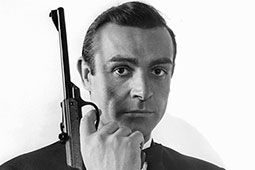

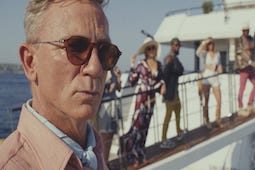
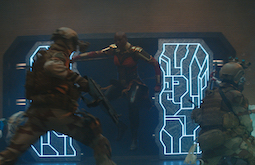
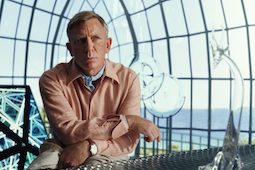
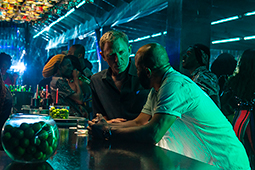
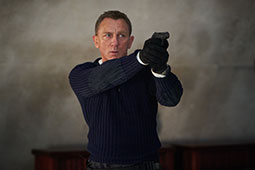





.jpg)
.png)






